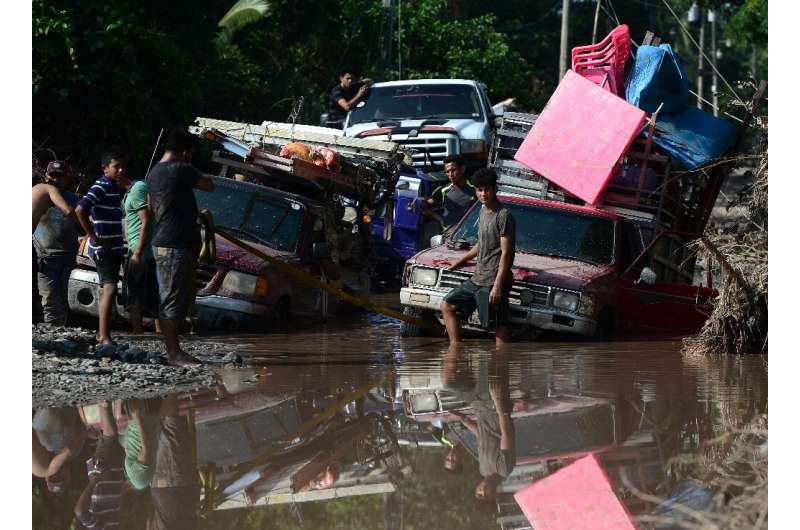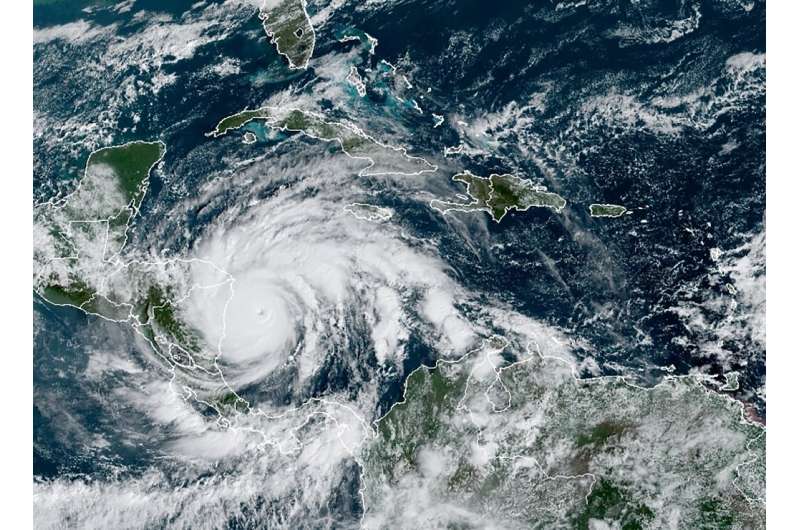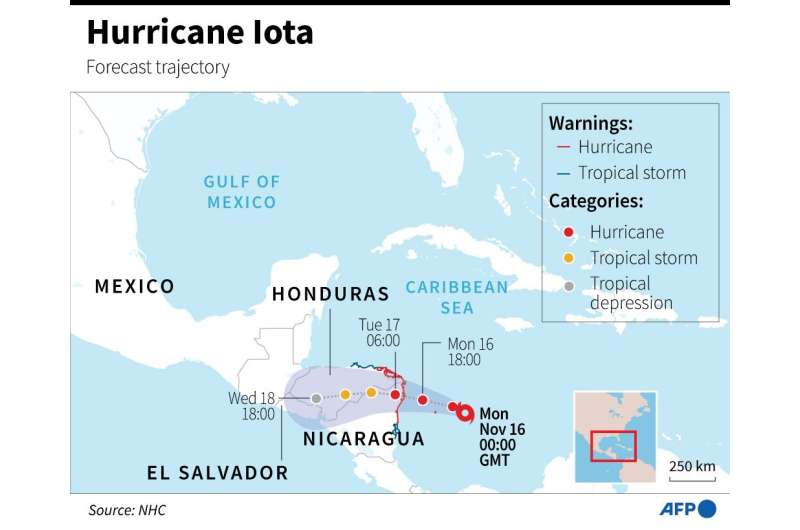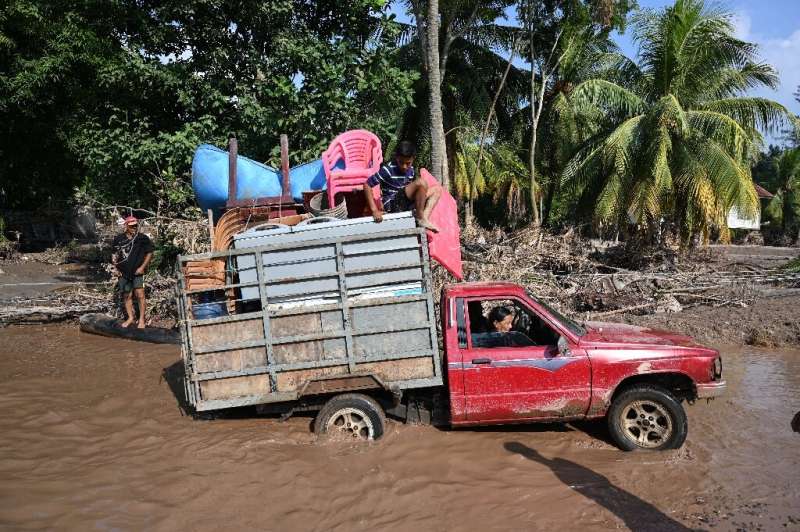Banana workers stranded at a flooded road while trying to evacuate from El Progreso in Yoro, Honduras, ahead of the arrival of Iota
Hurricane Iota strengthened into a "catastrophic" Category 5 hurricane and was set to slam into Central America late Monday, threatening areas devastated by a powerful storm just two weeks ago, the US National Hurricane Center (NHC) warned.
Iota was upgraded to Category 5—the highest level—as it moved westward over the Caribbean towards the Nicaragua-Honduras border.
The hurricane would "bring catastrophic wind, life-threatening storm surge and torrential rainfall," the NHC said, adding "on the forecast track, the core of Iota will make landfall within the hurricane warning area in northeastern Nicaragua tonight."
It was packing maximum sustained winds of 160 miles (260 kilometers) per hour with higher gusts recorded.
Category 5 hurricanes destroy many homes, wreck power supplies and most of the affected area is "uninhabitable for weeks or months."
The 2020 Atlantic hurricane season has seen the most named storms on record, with 30 named storms and 13 hurricanes.
So many, that by October, with the arrival of tropical storm Wilfred in the eastern Atlantic, meteorologists had already used every name on the season's list, causing them to move to the Greek alphabet for names, which had not been necessary since 2005.
Iota is the ninth letter of the Greek alphabet.
Warmer seas caused by climate change are making hurricanes stronger for longer after landfall, scientists say.
Hurricane Iota on November 16, 2020 as it approaches Central America
Evacuations underway
Communities on Monday prepared for the worst along the Caribbean coast.
Honduras, Guatemala and Nicaragua announced evacuations last week, even as the region was still reeling from the devastation inflicted by previous storm Eta.
In the Nicaraguan coastal city of Bilwi, residents were desperately trying to secure roofs of flimsy wooden homes with the same zinc sheets ripped off by Eta.
Many people were wrapping their belongings in plastic bags to protect them from the coming rains.
"We are worried, nervous. Psychologically we are not doing well, because losing our things and starting over is not easy. Some of us have old little houses and we risk losing everything," Silvania Zamora told AFP.
Authorities have ordered people to leave the area, but many are refusing, fearing Covid-19.
-
Map showing the location and projected path of Hurricane Iota.
-
Workers evacuate from a banana plantation near El Progreso, Honduras, ahead of Hurricane Iota, in November 2020
"Some of us prefer to stay and die in our homes. There has never been a repeat hurricane in such a short time, but what can we do against the force of God and nature," Zamora said.
Eta's heavy rains burst river banks and triggered landslides as far north as Chiapas, Mexico.
Initial estimates show "some 80,000 families are going to be at risk," said Guillermo Gonzalez, head of Nicaragua's disaster response agency Sinapred.
Evacuations were underway in communities along the border with Honduras, he said.
Authorities on Friday sent boats to evacuate the community in Cabo Gracias a Dios, where the Coco River flows into the Caribbean along the "Mosquito Coast."
The NHC warned that Iota would deposit 10 to 20 inches (250 to 500 mm) of rain on Honduras, northern Nicaragua, southeast Guatemala and southern Belize, with isolated totals of up to 30 inches.
"This rainfall would lead to significant, life-threatening flash flooding and river flooding, along with mudslides in areas of higher terrain," it said.
© 2020 AFP



























